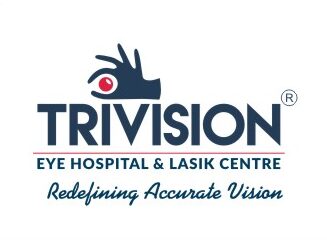

Tears help the eyes to stay moist, healthy & comfortable. Dry eye is a condition that affects the quantity or quality of the tears causing the eyes to feel dry & irritated because of insufficient lubrication.

Tears made by the lacrimal gland are necessary for overall eye health & clear vision. Tears are constantly produced to bathe, nourish & protect the eye surface. They also wash away dirt & debris.
Tears are also produced in response to emergencies such as a particle or dust in the eye, an infection or irritation of the eye or an onset of strong emotions.
Tears are made up of proteins, electroytes & vitamins that are critical to maintain the health of the eye surface. They also help protect the eye from bacteria & other type of infections.

The layer of tear film on the eye is constantly thining & evaporating. Normally this process, known as tear film break up, isn’t a problem. New tears are continuosly being produced to maintain the tear film. When a person blinks, it is just the body’s automatic reflex to spread the new tear film across the eyes. Problems arise when the quantity or quality of the tear film changes, If an insufficent amount of tear are produced, there are dry spots which develop on the surface of the eye. These dry spots start making the eye uncomfortable.
Dry eye can make it more difficult to perform some activities such as using a computer or reading for an extended period of time & it can decrease tolerance for dry environments such as sitting in an air conditioned room or an airplane for a long time. It can also make the person more uncomfortable in dry hot climates.
In addition inflammation of the surface of the eye may occur along with dry eye, if left untreated this condition can lead to pain, ulcer or scars on the cornea & some loss of vision. However permanent loss of vision from dry eye is uncommon. Dry eye can also compromise results of cataract & refractive surgery.
Although the condition is not curable the symptoms of the dry eye can improve with treatment. The primary treatment is installation of artificial tears at variable intervals depending upon the severity of dry eye. Artificial tears are available in the form of eye drops, gels & ointments for night use.
Lubricants:
The lubrication eye drops provide relief from the symptoms & are an important replacement of naturally produced tears. Artificial tears are now available in preservative free formulations which are less toxic to the ocular surface & can be used more frequently & safely.
Immunomodulators:
Cyclosporine, an anti inflammatory medication has been shown to have clinical benefits in the treatment of dry eye. It decreases the corneal damage & improves the quality of tears thereby reducing symptoms of dry eye. Similarly Chloroquine phosphate has also shown similar benefits. Both these medications are available as eye drops which need to be instilled twice a day along with the lubricants for 3 to 6 months to who beneficial effects. in some cases of severe dry eye, short term use of corticosteroid eye drops that decrease inflammation is required.
Punctal Plug:
These plugs are inserted into the punctum (drainage holes at the inner corner of the eyelids) and they help by allowing the natural tears to remain longer in contact with the eye rather than draining out quickly through the punctum. This keeps the limited volume of tears on the eye for a longer time, thereby decreasing symptoms of dry eye. These plugs are not felt. They are made of silicone or callagen, They are available in temporary (reversible) or permanent forms.
Supplements:
Some studies also show a beneficial effect of dietary supplements such as Omega 3 fatty acids & Vitamin D in decreasing symptoms of dryness. Treating eyelid conditions like inflammation or infection of eyelid margin also benefit the individual.

Dry eye symptoms may include any of the following :

Dry eye can be a temporary or chronic condition: